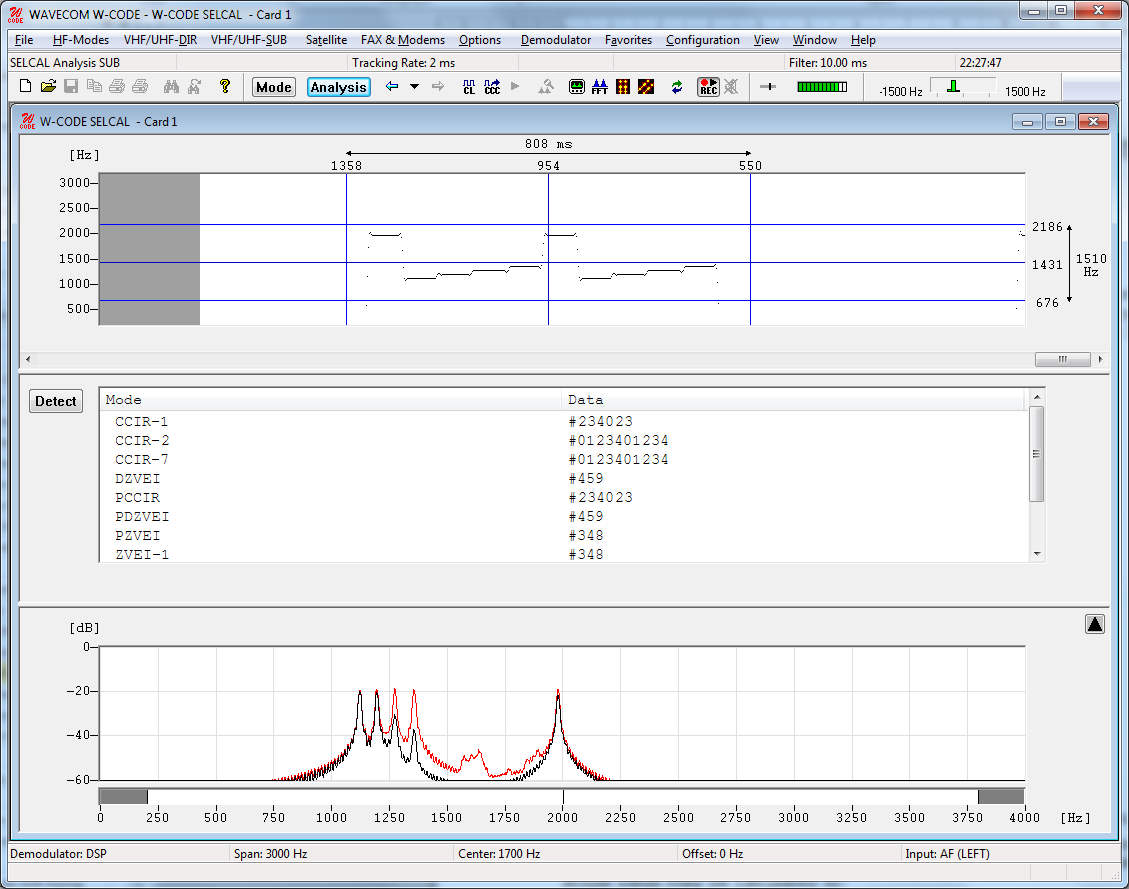
The SELCAL analysis for the VHF/UHF range employs a graphical display in two dimensions, frequency (y-axis) and time (x-axis). Both values may be preset. This tool was developed for the analysis of analogue sequential single tone call systems.
After starting SELCAL Analysis the detected frequency values are displayed as pixels.
A SELCAL signal is easily recognized as stable lines. To stop the horizontally scrolling display, click on the display. Measurement cursors for both the time axis and the frequency axis appear. The display may be scrolled backwards, with a maximum range of 15 seconds when tracking rate is set to 1 ms, and 225 seconds when the tracking rate is set to 15ms. The scroll-back range for all tracking rate settings in between varies accordingly.

Tracking rate determines the sampling rate. The range is 1 - 15 ms, default is 2 ms.
Double-clicking Filter inserts a low pass filter for filtering the SELCAL system tones. The value of the filter should be adjusted to avoid serious tone distortion. A rule-of-thumb value is 1.6 times the baud rate.
The filter range is 1 - 100 ms.
Using the Span menu the resolution of the frequency axis may be increased. The steps are 3000 Hz (for analogue SELCAL systems), 1500, 600 and 300 Hz.
From the Center menu the center frequency may be adjusted. It is important to readjust the center frequency whenever the frequency (Span) axis is increased.
Pressing the Detect button starts the SELCAL analysis mode. The monitored signal buffer is searched for valid tone data. Testing is sequential, and the name of the system under test is displayed. Recognized systems are identified below the graphics window. Decoding of an identified system may be immediately started by double-clicking the system in the output window.
When evaluating analogue tone call systems, be aware that some systems are almost technically identical or only differ in the allocation of tones (e.g., ZVEI-1 and ZVEI-2), and thus a certain degree of tolerance must be shown when testing analogue SELCAL systems. Be prepared for double or multiple identifications.
Several color schemes are available through the right-click menu.